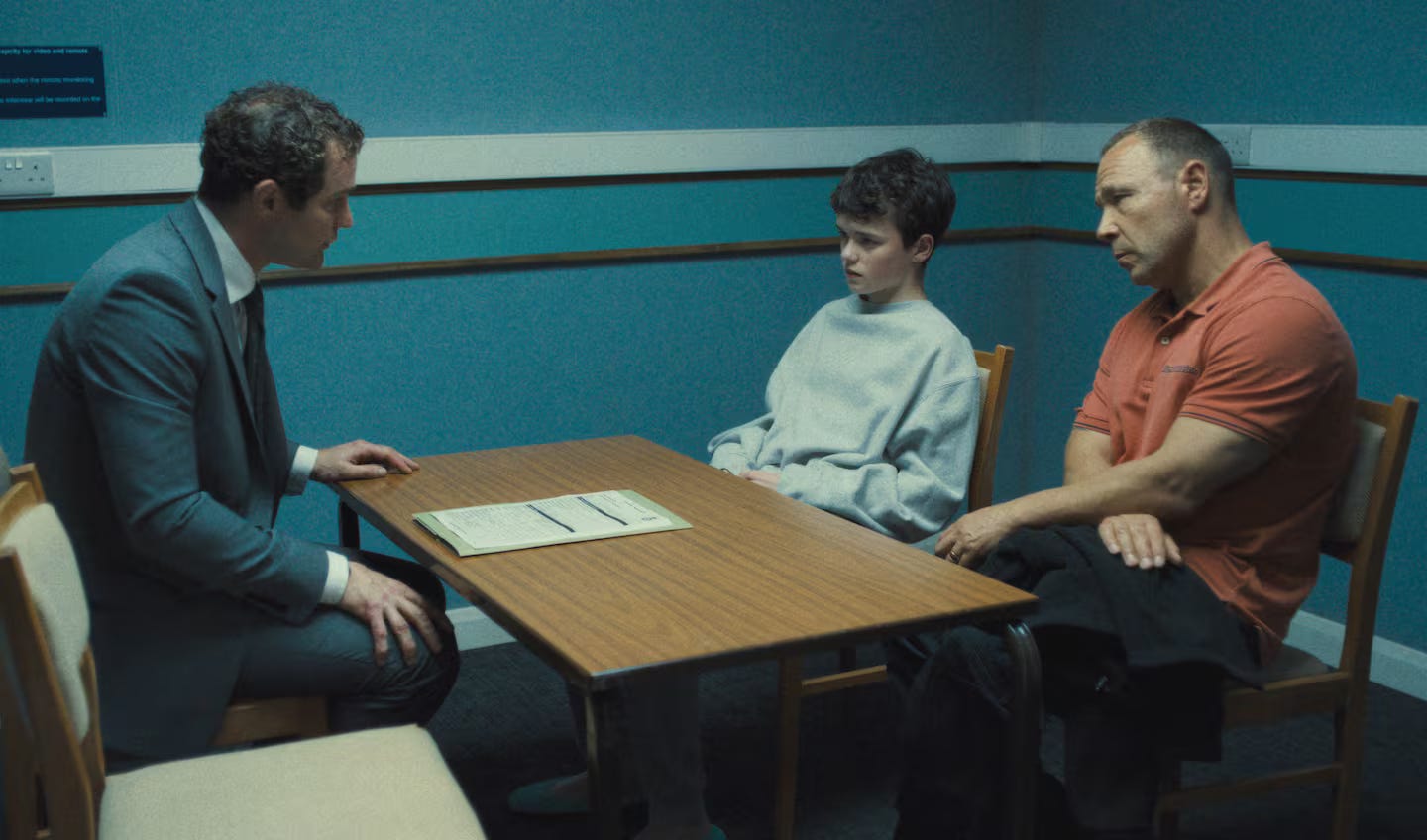What “Adolescence” Gets Wrong About Incels, Crime, and Class
Stop treating fictional drama as real-life data
Just weeks after its release, “Adolescence” became the one of the most-watched TV series in Netflix’s history.
The series tells the story of Jamie, a 13-year-old boy from a stable, two-parent household who becomes immersed in incel (involuntary celibate) ideology online and eventually stabs a female classmate to death. It has been praised widely for its emotional depth, gripping storytelling, and realistic portrayal of teen violence. The prime minister of the UK, Keir Starmer, called it a “documentary” and suggested it should be shown in schools. Headlines in prominent outlets like The Guardian describe it as “unnervingly on-the-nose.”
The praise centers on the show’s purported insight into the dangerous intersection of adolescence, online radicalization, and toxic masculinity.
Despite its emotional impact, though, “Adolescence” is fiction widely misinterpreted as fact. The very aspects praised as realistic are, indeed, statistically improbable and misleading.
Shortly after watching the show, I spoke with William Costello, a PhD student at the University of Texas who is among the few researchers seriously studying the incel subculture. His findings complicate the simplistic narrative many viewers seem to believe “Adolescence” affirms.
One of the most persistent myths about incels is that they are predominantly white far-right extremists. In fact, 42 percent are ethnic minorities, and their average political orientation leans center-left. Incels don’t constitute a coherent ideological movement; they share not a political vision but a sense of despair — around sex, status, and social rejection. Moreover, according to Costello’s research, 73 percent of self-identified incels meet the criteria for moderate or severe depression, compared with 33 percent of non-incels. Two-thirds are also moderately or severely anxious. More than 50 percent have had suicidal thoughts in the past two weeks. And roughly a third of self-identified incels qualify for a diagnosis on the autism spectrum.
Psychologists find that incels tend to score high on what’s called “interpersonal victimhood”: They have a tendency to ruminate on past slights, demand acknowledgment of their suffering, and believe they are morally superior because of the wrongs they’ve endured. It’s a toxic mindset, and it’s one that “Adolescence” depicts with emotional force.
Yet the scenario depicted — a teenage boy influenced by incel ideology murdering a female classmate — is among the rarest forms of youth violence. The show’s creators say they were inspired by the real rise in knife violence across the UK, which is indeed a serious issue. However, only one in 20 knife crime victims is a teenager. The vast majority of perpetrators and victims are adult men. The Ministry of Justice in the UK reports that 17 percent of knife crimes are committed by individuals aged 10 to 17. Only 13 percent of perpetrators and 9 percent of victims are female. And knife crime disproportionately affects men of color, not white adolescents like Jamie.
Another reason the series should not be mistaken as representative is that the killer in “Adolescence” comes from a two-parent home. In reality, 76 percent of criminal offenders in the UK were raised in fatherless homes. Likewise, US data show that children from fatherless homes are five times more likely to commit crimes and 20 times more likely to end up in prison — a statistic cited by Barack Obama in 2008.
I observed this pattern firsthand in my own life. I had five close friends in high school. One was raised by his grandmother and had never met his father. Another was raised by a single mother and seldom spoke with his dad. Both these boys later went to prison. Another friend, also raised in a fatherless home, was shot to death by another young male during a gang initiation.
In “Adolescence,” the victim is a young girl. In reality, three out of four stabbing victims in Britain are male. This is consistent with global statistics indicating that approximately 90 percent of homicides are committed by males and 70 percent of the victims are male. When statistics on violent crime are gathered from around the world, the result is utterly clear and amazingly consistent. Crime statistics from Australia, Botswana, Brazil, Canada, Denmark, Germany, Iceland, India, Kenya, Mexico, Nigeria, Scotland, Uganda, the United Kingdom, and the United States all exhibit the same basic pattern. In each of these societies, without a single exception, young males are by far the most likely to be the perpetrators as well as the victims of violent crime.
The creators of “Adolescence” may have intentionally crafted an atypical narrative to highlight how rage and violence can appear unexpectedly. Ironically, some of the series’s admirers miss this nuance, mistaking a fictional tragedy for a representative one.
In doing so, they overlook uncomfortable truths about the causes of most violent crime, which are rooted less in online radicalization than in fractured families and offline peer dynamics.
“Adolescence” is a superb work of art. It should not be mistaken for reality.
This article was originally published by the Boston Globe under the title “‘Adolescence’ is great TV — but not because it’s realistic.”



Does anyone out there find the concept of a 13-year-old "incel" completely overwrought? I grew up in a beach town in Florida and there were kids who were "pretty fast" - quoting The Knack. But they were exceptions to the norm, as I suspect is still the case. My familiarity with the term is that it is more apt to describe young men (meaning, not minors and likely in their 20s) who are experiencing anxiety overy their virginal (or semi-virginal) status, a condition that I know tends to resolve itself. I don't think film producers do anybody any favors by inducing such anxiety among 13-year-olds.
Make a show about a Muslim honor killing and see what Keir Starmer and the like say about it.